Early Summer / What Did the Lady Forget Blu-ray Movie
HomeEarly Summer / What Did the Lady Forget Blu-ray Movie 
麦秋 / Bakushū / The Ozu Collection / Blu-ray + DVDBFI Video | 1951 | 125 min | Rated BBFC: U | Jul 19, 2010
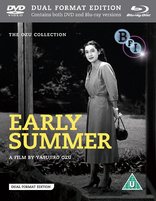
Movie rating
7.9 | / 10 |
Blu-ray rating
| Users | 0.0 | |
| Reviewer | 4.0 | |
| Overall | 4.0 |
Overview
Early Summer / What Did the Lady Forget (1951)
The Mamiya family is seeking a husband for their daughter, Noriko, but she has ideas of her own. Noriko impulsively chooses her childhood friend, at once fulfilling her family's desires while tearing them apart.
Starring: Setsuko Hara, Chishû Ryû, Chikage Awashima, Kuniko Miyake, Ichirô SugaiDirector: Yasujirô Ozu
| Foreign | Uncertain |
| Drama | Uncertain |
Specifications
Video
Video codec: MPEG-4 AVC
Video resolution: 1080p
Aspect ratio: 1.33:1
Original aspect ratio: 1.37:1
Audio
Japanese: LPCM 2.0 Mono
Subtitles
English
Discs
25GB Blu-ray Disc
Two-disc set (1 BD, 1 DVD)
DVD copy
Playback
Region B (locked)
Review
Rating summary
| Movie | 4.0 | |
| Video | 3.5 | |
| Audio | 3.5 | |
| Extras | 0.0 | |
| Overall | 4.0 |
Early Summer / What Did the Lady Forget Blu-ray Movie Review
Reviewed by Dr. Svet Atanasov August 26, 2010Japanese director Yasujiro Ozu's "Early Summer" (1951) arrives on Blu-ray courtesy of the British Film Institute. The only supplemental feature included with this release is Yasujiro Ozu's second sound film "What Did the Lady Forget" (1937), which is placed on a separate SDVD. A 18-page illustrated booklet is also included. In Japanese, with optional English subtitles for the main feature. Region-B "locked".

Noriko
The main protagonist in Yasujiro Ozu’s Early Summer is a 28-year-old woman named Noriko (Setsuko Hara, Meshi a.k.a A Married Life) who is yet to be married. She is beautiful, intelligent and employed. She enjoys her freedom but also realizes that it is time to create a family.
One day, Noriko’s boss, Satake (Shuji Sano, Sudden Rain), proposes that she marries one of his best friends, a 40-year-old man with a stable career. Upon learning about the proposition Noriko’s family begins pressuring her to do what is right – become a housewife. But having never before seen the man everyone believes is right for her, Noriko asks for time to make up her mind.
Everyone in Noriko’s family interprets her request differently. Noriko’s parents (Ichiro Sagai and Chieko Higashiyama, The Life of Oharu) assume that she might be concerned with the fact that the man she is encouraged to marry is much older than her. Noriko’s elder doctor-brother, Koichi (Chishu Ryu, Where Spring Comes Late), thinks that she is simply happy to be single.
Meanwhile, the mother (Haruko Sugimura, Daughters, Wives and a Mother) of an old friend of Noriko who has lost his wife meets her and asks if she would consider marrying her son (Hiroshi Nihonyanagi, Young People). Noriko immediately agrees not realizing the impact her decision would have on her family.
Early Summer is a film in which traditional Japanese thinking collides with modern, liberal views about female independence. The conflict is observed through the eyes of three different generations, each respectful of the other two but unwilling to compromise.
Ozu does not side with any of the three parties in the conflict. His camera merely observes the emotional debates between Noriko and her family, allowing the viewer to independently form an opinion and then pick a side.
The plot is fairly simple, lacking surprising twists and well timed climaxes. What makes Early Summer an attractive and exciting film are the rich characters and the manner in which they communicate their feelings. There are no cliched overdramatizations either – the main characters and their dilemmas are analyzed rather than satirized.
Throughout Early Spring Ozu’s camera remains mostly static, primarily at floor level. Like Tokyo Story, Early Spring also has a well defined episodic structure. The transitions from episode to episode are, again, fairly abrupt.
The cast is relaxed and very convincing. Hara is not as impressive as she is in Tokyo Story but her emotions feel real. Sagai and Higashiyama are not an overly attractive couple either but their discussions are fascinating to behold. Ryu and Awashima both deliver credible performances.
This release of Ozu’s Early Spring also contains the Japanese director’s What Did the Lady Forget (1937), which was only his second sound film.
Note: In 1952, Early Summer won the Best Film award at the Kinema Junpo Awards. During the same year the film also won Best Film and Best Actress (Setsuko Hara) awards at the Mainichi Film Concours.
Early Summer / What Did the Lady Forget Blu-ray Movie, Video Quality 
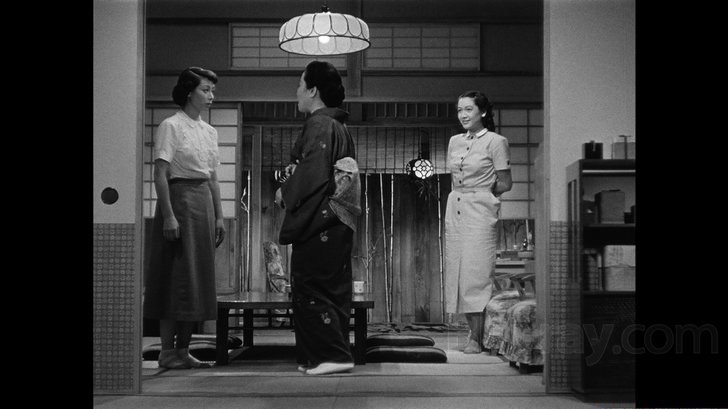
Presented in an aspect ratio of 1.33:1, encoded with MPEG-4 AVC and granted a 1080p transfer, Yasujiro Ozu's Early Summer arrives on Blu-ray courtesy of the BFI.
Sourced from elements provided by Criterion, the high-definition transfer conveys pleasing clarity and contrast levels. The indoor scenes, in particular, look notably stronger here than they do on the R1 SDVD release of Early Summer. Fine object detail is also dramatically improved. Edge-enhancement and macroblocking are never a serious issue of concern. I did not detect any traces of heavy noise reduction either. This said, I must point out that there are various inherited limitations - tiny scratches and marks occasionally pop up here and there, some frame transitions are problematic, etc. Still, considering the quality of the elements BFI had to work with, I believe it is fair to say that this Blu-ray release probably offers the best possible presentation of Early Summer that can be had at the moment. (Note: This is a Region-B "locked" Blu-ray disc. Therefore, you must have a native Region-B or Region-Free PS3 or SA in order to access its content).
Early Summer / What Did the Lady Forget Blu-ray Movie, Audio Quality 
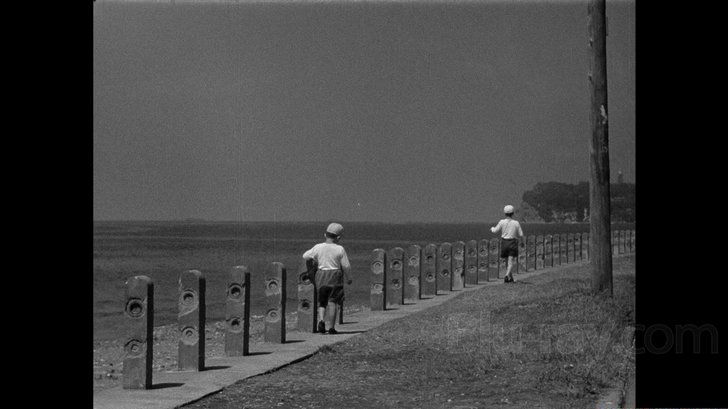
There is only one audio track on this Blu-ray disc: Japanese LPCM 2.0. For the record, the BFI have provided optional English subtitles for the main feature.
The Japanese LPCM 2.0 track is pleasing - slightly crisper and better rounded in comparison to the Japanese Dolby Digital Mono track from Criterion's SDVD release of Early Summer - but with a few inherited limitations. For example, mild background hiss is often easy to hear, and the mid-range dynamics tend to fluctuate quite a bit. Still, the dialog is crisp, clean, and easy to follow. All in all, this is likely the optimal audio quality that can be had at the moment.
Early Summer / What Did the Lady Forget Blu-ray Movie, Special Features and Extras 
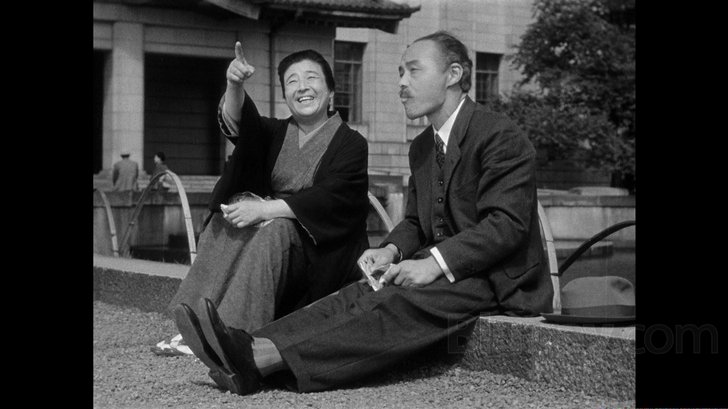
Note: This release of Yasujiro Ozu's Early Summer also contains the director's early film What Did The Lady Forget? (1937), which is placed on a separate SDVD. Unfortunately, I did not get a copy of it to review and therefore cannot comment on the quality of the presentation. The actual Blu-ray disc does not contain any supplemental features.
Booklet - 18-page illustrated booklet containing Michael Atkinson's essay "Early Summer and What Did the Lady Forget?"; Yasujiro Ozu biography by Tony Rayns; and "Yasujiro Ozu" by Chishu Ryu (originally published in Sight & Sound, in 1964).
Early Summer / What Did the Lady Forget Blu-ray Movie, Overall Score and Recommendation 
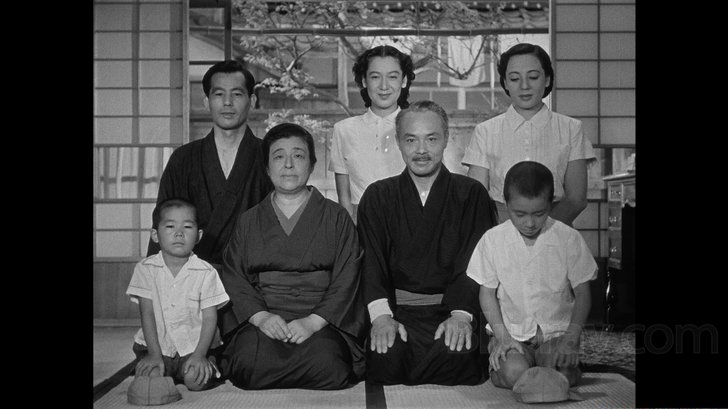
Revisiting some of Yasujiro Ozu's best films on Blu-ray is a real treat. The BFI deserve a lot of credit for doing what they can to introduce one of Cinema's greatest directors to a new generation of film lovers. Like Tokyo Story, Yasujiro Ozu's Early Summer comes VERY HIGHLY RECOMMENDED.
Similar titles
Similar titles you might also like

The Only Son
一人息子 / Hitori musuko
1936

Equinox Flower
彼岸花 / Higanbana / The Ozu Collection
1958

Late Autumn / A Mother Should Be Loved
秋日和 / Akibiyori | The Ozu Collection
1960

Late Spring
晩春 / Banshun
1949

An Autumn Afternoon
秋刀魚の味 / Sanma no aji | The Ozu Collection
1962

Good Morning
お早よう / Ohayō / The Ozu Collection
1959

Tokyo Story
Remastered | 東京物語 / Tôkyô monogatari
1953

The Flavour of Green Tea Over Rice
お茶漬けの味 / Ochazuke no aji
1952

There Was a Father
1942

Record of a Tenement Gentleman
長屋紳士録 / Nagaya shinshiroku
1947

I Was Born, But...
1932

Floating Weeds
浮草 / Ukigusa / Masters of Cinema
1959

The Insect Woman / Nishi-Ginza Station
にっぽん昆虫記 / 西銀座駅前 | Nippon konchûki / Nishi Ginza ekimae | Masters of Cinema
1963

Profound Desires of the Gods
神々の深き欲望 / Kamigami no Fukaki Yokubo / Masters of Cinema
1968

Tokyo Sonata
トウキョウソナタ / Tôkyô sonata / Masters of Cinema
2008

Akasen chitai / Yôkihi
赤線地帯 / 楊貴妃 | Street of Shame / Princess Yang Kwei-Fei | Masters Of Cinema
1956

After the Storm
海よりもまだ深く/ Umi yori mo mada fukaku / Arrow Academy
2016

Yi Yi
一一 / A One and a Two
2000

Gertrud
1964

Sisters of the Gion
Gion no shimai
1936